car painting process step by step pdf
The car painting process is a detailed, multi-step procedure requiring precision and care; It transforms a vehicle’s appearance, ensuring a durable, high-quality finish. Key steps include surface preparation, priming, and paint application, with techniques suitable for both professionals and DIY enthusiasts aiming for professional results.
1.1 Overview of the Car Painting Process
The car painting process involves multiple steps to achieve a professional finish. It begins with surface preparation, including disassembly and cleaning, followed by sanding to ensure smoothness. Masking protects areas not meant to be painted; Primer is applied to enhance paint adhesion and durability. The base coat adds color, while the clear coat provides gloss and protection. Buffing and polishing finalize the finish. Each step requires precision to ensure a flawless, long-lasting result, transforming the vehicle’s appearance entirely.
1.2 Importance of Proper Painting Techniques
Proper painting techniques are crucial for achieving a durable, professional finish. They prevent defects like unevenness, peeling, and fading, ensuring long-lasting results. Correct application of primer, smooth base coat layers, and avoiding contamination are essential. These techniques enhance the vehicle’s appearance and protect it from environmental damage. Proper methods also save time and money by preventing costly repairs. By following best practices, you ensure a flawless, high-quality finish that withstands the elements and maintains the car’s value over time.
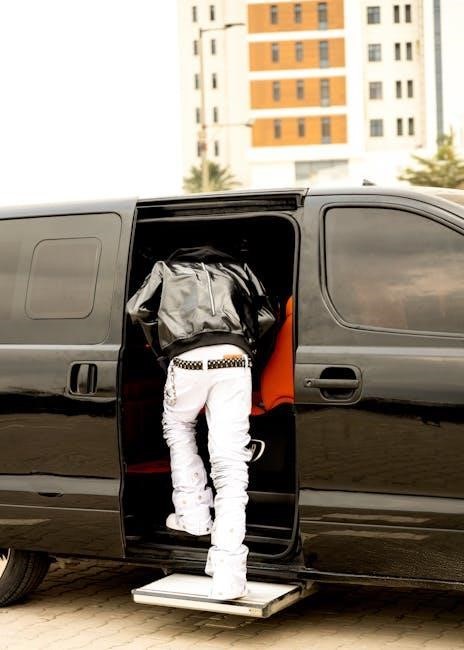
Preparation for Car Painting
Preparation involves disassembling the vehicle, cleaning the surface, and masking areas not to be painted. Feather priming and preparing bumpers and e-coat panels ensure a smooth, professional finish.
2.1 Disassembling the Vehicle
Disassembling the vehicle is crucial for achieving a professional paint job. Remove exterior components like bumpers, trim, and emblems to ensure even paint application. Masking is applied to protect areas not being painted, such as windows and door handles. Proper disassembly prevents paint from adhering unevenly and ensures a smooth finish. Store removed parts safely to avoid damage or loss. This step is essential for a seamless painting process and professional results.
2.2 Cleaning the Surface
Cleaning the vehicle’s surface is vital for a successful paint job. Remove dirt, grease, and contaminants using solvents or high-pressure washes. Old adhesives and residue must be scraped off. A clean surface ensures proper paint adhesion and a smooth finish. Use microfiber towels to wipe down areas, preventing dust from settling. This step is critical for achieving a professional-looking result and preventing paint defects. Proper cleaning sets the foundation for the entire painting process.
2.3 Masking the Vehicle
Masking is a critical step to protect areas not meant to be painted. Use high-quality masking tape and paper to cover windows, trim, and emblems. Apply the tape carefully, ensuring it adheres firmly to prevent paint seepage. This step ensures clean, sharp edges and maintains the vehicle’s original design. Proper masking saves time and avoids costly repairs. It is essential for achieving a professional, precise paint job. Remove masks only after the final coat of paint has dried.
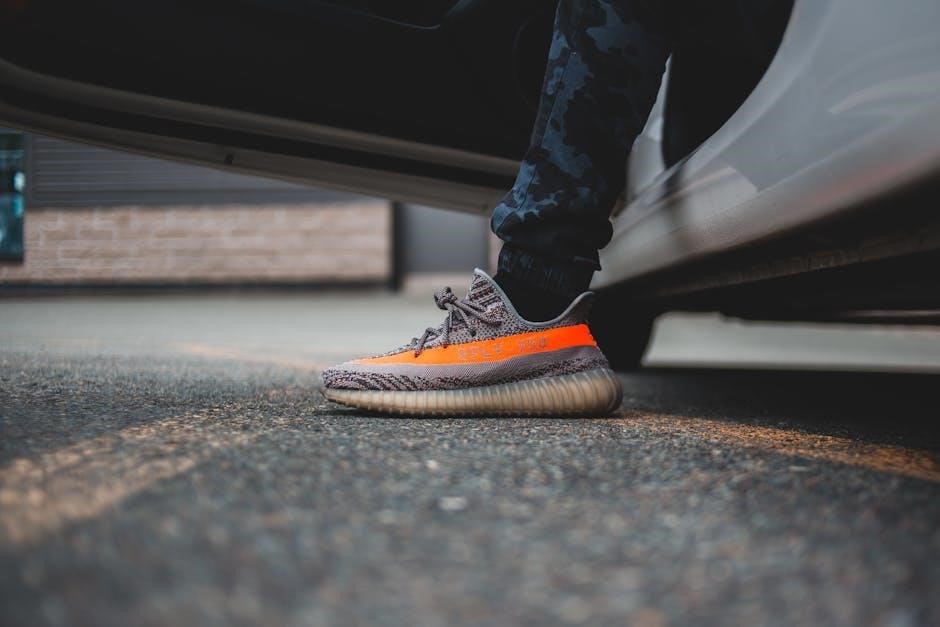
Sanding the Car
Sanding is a crucial step in the car painting process, ensuring smooth surfaces and proper paint adhesion. It removes imperfections, old paint, and rust, preparing the vehicle for primer and paint; Start with coarse-grit sandpaper for rough areas, then progress to finer grits for a polished finish. Use sanding blocks for large panels to maintain even surfaces. Proper sanding is essential for a flawless, professional-looking paint job.
3.1 Types of Sanding Techniques
Various sanding techniques are used in car painting to achieve smooth surfaces. Dry sanding removes old paint and rust, while wet sanding minimizes dust and scratches. Orbital sanding is ideal for large areas, using circular motions for even results. Hand sanding provides precision for intricate details. Block sanding ensures flat surfaces on panels. Each technique addresses specific needs, ensuring proper paint adhesion and a flawless finish. The right method depends on the surface condition and desired outcome, making sanding a critical step in the painting process.
3.2 Tips for Effective Sanding
For effective sanding, start with coarse-grit sandpaper to remove imperfections and progress to finer grits for smoothing. Work in small sections to maintain evenness. Feather edges carefully to blend repairs seamlessly. Use a sanding block for flat surfaces to prevent unevenness. Clean dust regularly to avoid scratches. Avoid applying too much pressure, which can create swirl marks. Sand in the direction of the metal grain for a smoother finish. Proper sanding ensures better paint adhesion and a professional-looking result.
Applying Primer
Primer is essential for ensuring proper paint adhesion and durability. It fills minor imperfections and creates a uniform base for painting. Use high-quality primers suitable for your vehicle’s surface, applying thin, even coats for optimal results.
4.1 Types of Primers Used in Car Painting
Several types of primers are used in car painting, each serving specific purposes. Epoxy primers offer excellent durability and corrosion resistance, making them ideal for metal surfaces. Urethane primers are versatile, providing strong adhesion and flexibility. Acrylic primers are water-based, eco-friendly, and suitable for most automotive applications. High-build primers are used to fill minor imperfections, while primer surfacers ensure a smooth base for painting. Choosing the right primer is crucial for achieving a professional finish and long-lasting results.
4.2 How to Apply Primer Correctly
Applying primer correctly involves ensuring the surface is clean and dry. Use a spray gun, maintaining a consistent distance for even coverage. Apply thin coats, allowing each to dry before the next. Avoid over-spraying to prevent drips. For best results, follow the manufacturer’s instructions for mixing and drying times. Proper primer application ensures better paint adhesion, a smoother finish, and enhanced durability. It’s a critical step in achieving a professional-looking paint job.
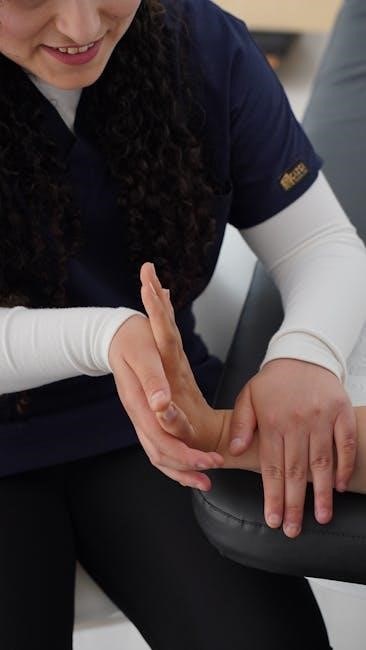
Painting the Car
Painting the car involves applying base coat and clear coat for a smooth, glossy finish. Ensure even coverage, proper technique, and safety guidelines are followed.
5.1 Base Coat Application
The base coat application is a critical step in the car painting process. It involves applying the colored paint evenly using a spray gun. Proper mixing of the paint with the recommended thinner is essential for consistency. Apply thin, even layers, allowing each coat to dry before the next. Ensure good ventilation and use a mask to avoid inhaling fumes. The base coat sets the color and tone of the vehicle, so precision and care are vital for a professional finish. This step requires patience and attention to detail to achieve optimal results.
5.2 Clear Coat Application
The clear coat application is the final layer that protects the base coat and enhances the vehicle’s appearance. It is applied using a spray gun, ensuring thin, even layers for a smooth finish. Allow each coat to dry completely before applying the next. This step requires a clean, dust-free environment to prevent imperfections. The clear coat adds gloss and durability, making it essential for a professional-looking finish. Proper ventilation and safety gear are crucial during this process to avoid health risks and ensure optimal results.
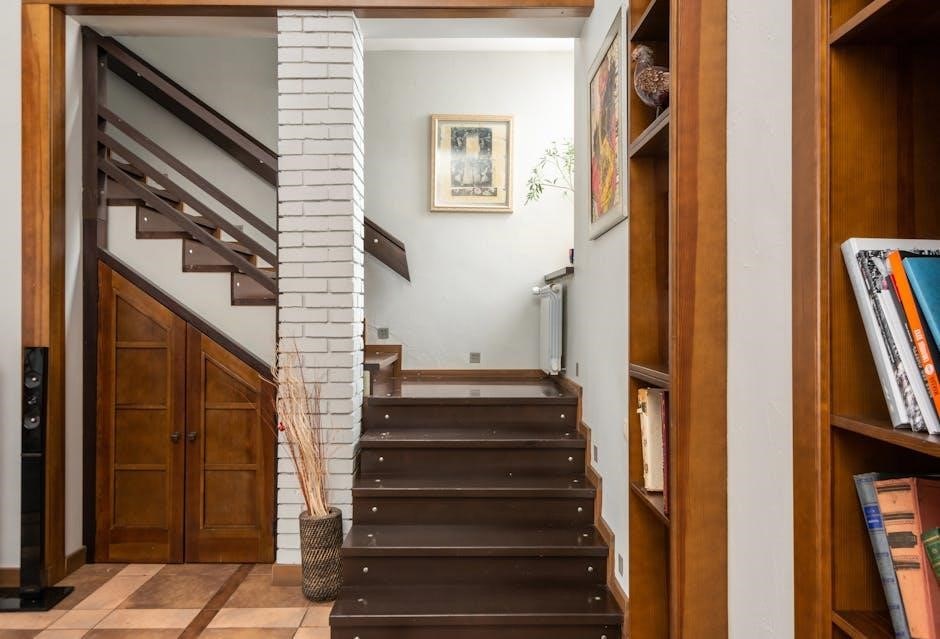
Buffing and Polishing
Buffing and polishing refine the paint finish, removing imperfections and enhancing gloss. Use buffing wheels with polishing compounds for a high-gloss finish, ensuring patience and precision for professional results.
6.1 Buffing Techniques
Buffing techniques involve using buffing wheels with polishing compounds to remove minor imperfections and enhance gloss. Start with coarse compounds for heavy scratches, then progress to finer grades for a smooth finish. Use circular motions and maintain consistent pressure to avoid unevenness. Avoid overheating the surface, as this can damage the paint. Work in small sections, inspecting each area before moving on. Proper buffing creates a high-gloss, professional finish, making it a crucial step in the painting process.
6.2 Polishing for a High-Gloss Finish
Polishing achieves a high-gloss finish by refining the paint surface. Use progressively finer polishing compounds, starting with medium-cut and ending with ultra-fine. Apply with a dual-action polisher, working in small, controlled motions. Avoid excessive pressure to prevent paint removal. Inspect under lighting to ensure evenness. Finalize with a clean, microfiber cloth to remove residue. This step eliminates minor imperfections, enhancing clarity and depth for a showroom-quality appearance. Proper polishing techniques are essential for a professional, long-lasting finish.
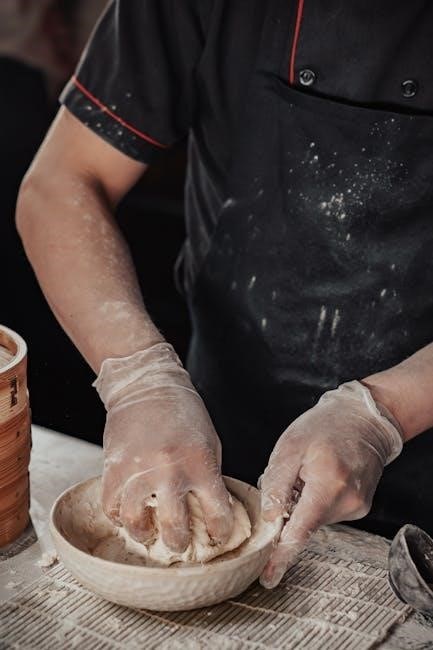
Reassembly of the Vehicle
Reassembly involves reinstalling all components removed during painting, such as trim, emblems, and exterior parts. Ensure all pieces are securely fastened and properly aligned. Inspect for fitment accuracy and functionality, addressing any issues promptly; This step restores the vehicle to its original state, completing the transformation with a professional finish.
7.1 Reinstalling Parts After Painting
Reinstalling parts after painting requires careful attention to detail. Start by cleaning and inspecting all components, ensuring they are free from dust and debris. Use the correct adhesives and fasteners to secure trim, emblems, and other exterior elements. Align each part precisely to maintain the vehicle’s original appearance. Double-check the fitment of moldings and weatherstripping to prevent gaps or misalignment. Once all parts are reattached, inspect the vehicle to ensure a seamless and professional finish. Proper reinstallation is crucial for both functionality and aesthetics.
7.2 Final Touch-ups
Final touch-ups involve addressing minor imperfections after reassembly. Inspect the vehicle for paint defects, such as dust particles or small scratches. Use touch-up paint to repair any blemishes, blending the color seamlessly. Clean the surfaces thoroughly to remove contaminants. Apply a protective wax or detail spray for a glossy finish. Ensure all edges and trim are properly aligned and secure. Avoid common mistakes like over-sanding or ignoring small flaws, as they can detract from the professional appearance. Attention to detail here ensures a flawless final result.
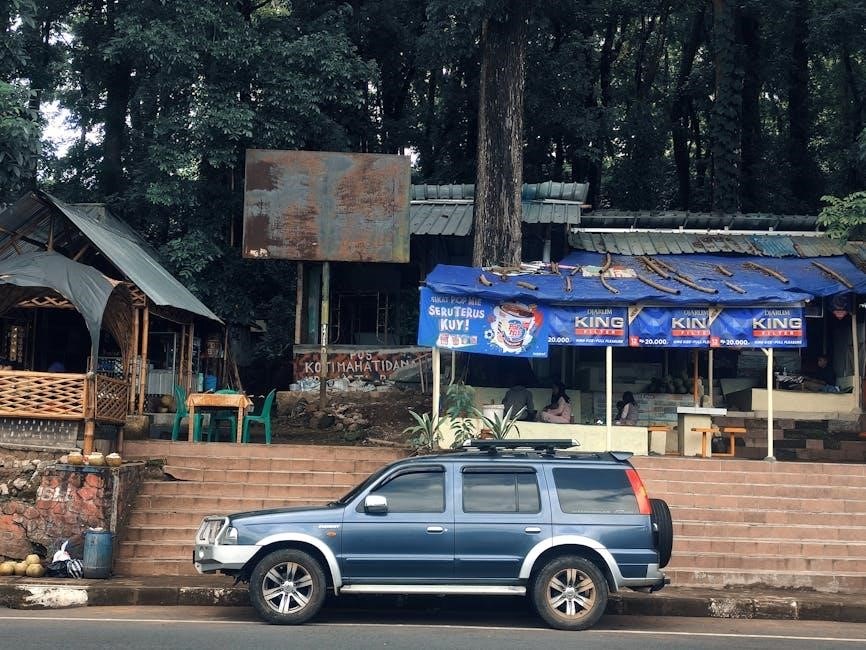
Final Inspection and Quality Control
The final inspection ensures the paint job meets quality standards. Check for defects like orange peel, runs, or uneven color. Verify smooth surfaces and proper paint thickness. Ensure all panels align perfectly and the finish is consistent across the vehicle. Address any issues promptly to achieve a professional, long-lasting result.
8.1 Checking for Paint Defects
Inspect the vehicle under bright lighting to identify defects like orange peel, runs, or dust particles. Check for uneven color, overspray, or areas where paint may have peeled. Ensure smooth transitions between panels and verify proper paint thickness. Use a paint thickness gauge to confirm adherence to manufacturer specifications. Document any imperfections and address them promptly to maintain quality. This step ensures the finish is flawless and professional, meeting high standards for durability and appearance.
8.2 Ensuring a Professional Finish
Achieving a professional finish requires meticulous attention to detail. After painting, allow the clear coat to cure completely. Use orbital buffers and microfiber pads to buff the surface, removing minor imperfections. Polish the car under proper lighting to enhance gloss and evenness. Inspect for any remaining defects and address them with touch-up paint. Regularly clean the vehicle to maintain the finish. Patience and precision are key to delivering a showroom-quality result that withstands the elements and retains its appearance over time.
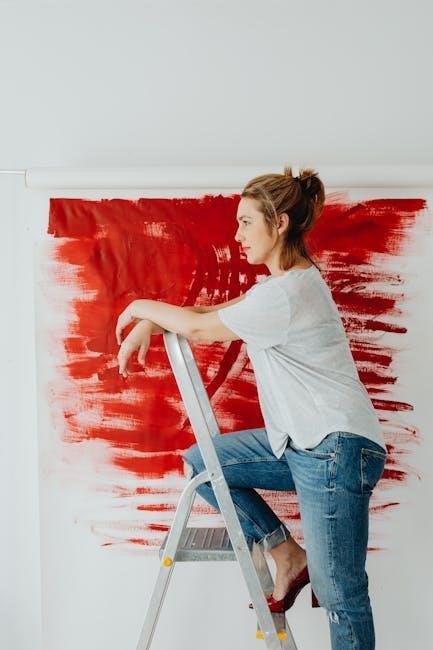
Tools and Equipment Needed
Essential tools include sandpaper, spray guns, air compressors, buffing wheels, and disposable paint cups. Safety gear like masks and gloves is also crucial for a safe process.
9.1 Essential Tools for Car Painting
The car painting process requires specific tools for optimal results. Sandpaper is used for smoothing surfaces, while spray guns and air compressors ensure even paint application. Buffing wheels are essential for achieving a glossy finish. Disposable paint cups are recommended for mixing and spraying paint efficiently; Additional tools like masking tape, primer guns, and paintbrushes are also necessary for detailed work. These tools collectively help in achieving a professional-grade paint job, ensuring durability and a flawless appearance.
9.2 Safety Equipment
Proper safety equipment is crucial for a safe car painting process. A respirator or mask protects against paint fumes and dust. Safety glasses or goggles prevent eye irritation. Gloves shield hands from chemicals and abrasives. A well-ventilated workspace is essential to avoid inhaling harmful vapors. Protective clothing, like coveralls, minimizes skin exposure. Ensure all equipment meets safety standards to maintain a hazard-free environment throughout the painting process.
Safety Precautions
Adhering to safety precautions is vital when painting a car. Always work in a well-ventilated area to avoid inhaling harmful fumes. Use protective gear like gloves, goggles, and a mask to prevent exposure to chemicals and dust. Ensure proper ventilation and keep flammable materials away from the workspace. Following safety guidelines ensures a safe and successful painting experience.
10.1 Protective Gear
Protective gear is essential for safeguarding against hazards during the car painting process. Gloves prevent skin contact with harmful chemicals, while goggles protect eyes from paint overspray and dust. A respirator or mask is crucial to avoid inhaling toxic fumes from primers and paints. Proper protective equipment ensures safety and prevents long-term health risks; Always wear a full-body suit or disposable overalls to shield clothing from stains and splatters. Prioritizing protective gear is vital for a safe and healthy painting experience.
10.2 Ventilation and Workspace Safety
Proper ventilation is critical when painting a car to prevent inhaling harmful fumes. Ensure the workspace is well-ventilated, using fans or exhaust systems to remove paint vapors. Maintain a clean, clutter-free area to minimize tripping hazards and ensure easy movement. Keep flammable materials away from the workspace, and avoid painting in direct sunlight or extreme temperatures. A safe, well-prepared environment is essential for achieving professional results and protecting your health. Always follow safety protocols to avoid accidents and ensure a smooth painting process.
Common Mistakes to Avoid
Avoid rushing the painting process, as improper drying times can lead to uneven finishes. Ensure all surfaces are properly prepared and free of contaminants before applying paint. Neglecting to follow manufacturer instructions for paint and primer can result in poor adhesion and durability. Always maintain a clean workspace to prevent dust and debris from ruining the paint job. Proper preparation and patience are key to achieving a professional, long-lasting finish.
11.1 Incorrect Sanding Techniques
Incorrect sanding techniques can lead to scratches, uneven surfaces, and poor paint adhesion. Using the wrong grit or excessive pressure can damage the metal or existing paint. Always start with coarse grit for shaping and progress to finer grits for smoothing. Avoid sanding in one spot too long, as it can create heat and damage the surface. Proper sanding ensures a smooth base for primer and paint, preventing costly rework and ensuring a professional finish. Attention to detail is crucial for optimal results.
11.2 Improper Primer Application
Improper primer application can lead to paint adhesion issues, uneven finishes, and reduced durability. Common mistakes include not allowing primer to dry fully, applying too thick a coat, or missing spots. Incorrect mixing ratios or using the wrong primer type for the surface can also cause problems; Additionally, not feathering primer edges or failing to sand before painting can result in visible lines and a poor final appearance. Proper primer application ensures a smooth, long-lasting finish and is essential for a professional-looking paint job.
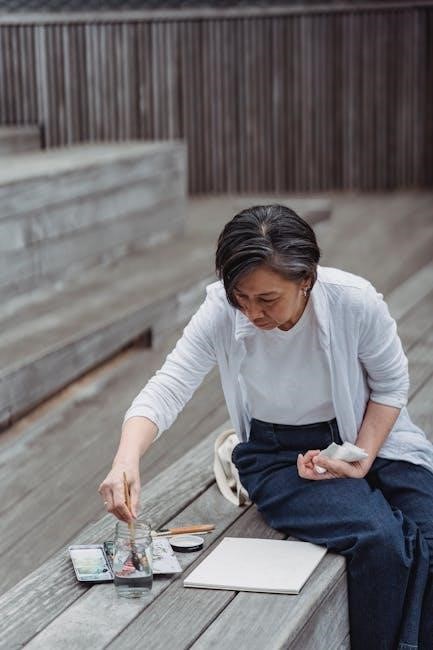
Tips for a Professional Finish
Ensure proper surface preparation, use high-quality materials, and apply thin, even coats. Avoid dust and contaminants, and allow adequate drying time between layers for a flawless result.
12.1 Color Matching
Accurate color matching is crucial for a professional finish. Use the vehicle’s color code to select the correct paint. Test the color on a small area first. Ensure the paint is mixed precisely, and apply thin coats to avoid mismatching. Use a spectrophotometer for precise color reading. Proper lighting conditions are essential for accurate color assessment. Avoid color variations by maintaining consistent application techniques and material temperatures. This ensures a seamless, factory-like finish.
12.2 Avoiding Dust and Contaminants
Maintaining a clean, dust-free environment is crucial for a flawless paint job. Use filtered air systems and protective gear to minimize contamination. Clean surfaces thoroughly with tack cloths before painting. Regularly inspect the workspace for dust particles. Avoid painting in windy or dirty conditions. Contaminants can cause defects, so ensure all tools and materials are free from debris. Proper ventilation and a well-prepared workspace are key to achieving a smooth, professional finish without imperfections.
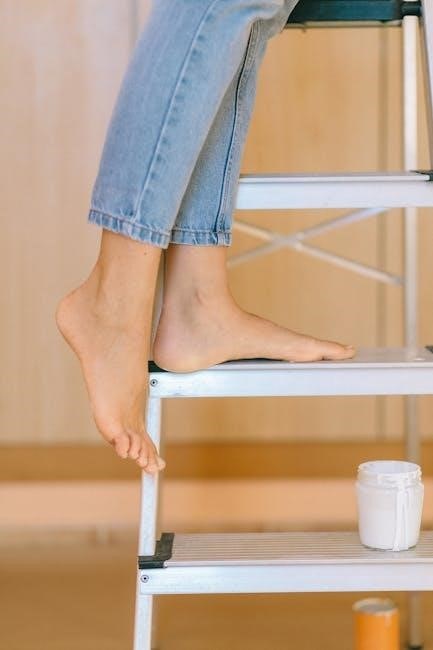
Environmental and Time Considerations
Painting in ideal weather conditions, avoiding humidity and extreme temperatures, ensures better results. Proper time management for each step is crucial to achieve a high-quality, long-lasting finish effectively.
13.1 Painting in Ideal Weather Conditions
Painting should be done in a controlled environment with temperatures between 60°F and 90°F and humidity below 60%. Avoid direct sunlight and high winds to prevent dust contamination. Ensure the surface is clean and dry before applying paint. Ideal conditions promote proper paint adhesion and curing, reducing the risk of defects. Always follow manufacturer guidelines for optimal results and a professional finish.
13.2 Time Management for Each Step
Effective time management is crucial for a successful car painting process. Allocate sufficient time for each step, from surface preparation to final buffing. Rushing can lead to defects and poor results. Ensure proper drying and curing times between coats, as specified by paint manufacturers. Plan each phase meticulously, considering environmental factors and material requirements. Adequate time management ensures a smooth workflow and a professional-quality finish. Proper scheduling prevents delays and maintains efficiency throughout the painting process.
Cost Estimation and Budgeting
Budgeting for car painting involves estimating costs for materials, tools, and labor. Allocate funds for paints, primers, sanding supplies, and safety gear. Plan for potential repairs or custom finishes.
14.1 Estimating Material Costs
Estimating material costs involves calculating expenses for paints, primers, and supplies. Consider the vehicle’s size, paint quality, and required quantities. Budget for sandpaper, masking materials, and safety gear. Research prices for high-quality primers and paint to ensure durability. Factor in additional costs for specialized tools or equipment rentals. Plan for potential repairs or touch-ups. Create a detailed list to avoid overspending and ensure all necessary items are included in your budget.
14.2 Budgeting for Tools and Equipment
Budgeting for tools and equipment is crucial for a successful car painting project. Essential items include sandpaper, spray guns, and safety gear. Consider the cost of air compressors, paint booths, or disposable paint cups. Consider the cost of buffing tools and polishing pads. For DIY projects, basic tools may suffice, while professional setups require specialized equipment. Plan for rentals or purchases, balancing quality and affordability. Allocate funds for consumables like masking tape and filters. Prioritize investments based on project scope and desired results.
The car painting process requires careful planning and execution. By following each step meticulously, you can achieve a professional finish. Patience and attention to detail are key to success.
15.1 Summary of the Car Painting Process
The car painting process involves thorough preparation, including disassembly and surface cleaning, followed by sanding and priming. The application of base coat and clear coat ensures a vibrant, protective finish. Buffing and polishing enhance the appearance, while reassembly and final inspections guarantee quality. Proper tools, safety measures, and attention to detail are crucial for achieving professional results. Patience and practice are key to mastering this complex yet rewarding process.
15.2 Final Tips for Success
For a flawless finish, work in a dust-free environment and use high-quality materials. Ensure proper ventilation and wear protective gear. Practice techniques on scrap metal before applying them to the vehicle. Avoid rushing, as patience is key to achieving a professional result. Regularly inspect your work and address imperfections promptly. Following these tips will help you achieve a stunning, long-lasting paint job that enhances your vehicle’s appearance and durability.